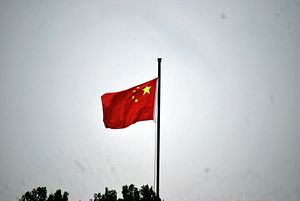Almost eight years have passed, and the Belt and Road Initiative (BRI) still remains a mystery, raising much global furor. Is China too difficult to understand or does China intentionally not want to be understood?
The story begins with President Xi Jinping’s eye-catching proposals to establish a Silk Road Economic Belt and 21st Century Maritime Silk Road in 2013. However, Beijing took over a year to form its leading group on the subject, and a year and a half to issue a single BRI guideline, full of vague mottos. Even the name was not meticulously drafted, experiencing changes from “One Belt, One Road” to the “Belt and Road Initiative.” That said, these fluctuations are consistent with Beijing’s framing of the BRI as mutually discussed, open, and inclusive.
Unexpectedly, this framing has caused unfettered reinterpretations even within China, and some of them totally contradict the main leadership body, the National Development and Reform Commission (NDRC). Some provincial governments simply talk of a “bridgehead” that vaguely alludes to a sense of growing military power. Other provinces have gone as far as to claim the BRI will restore China’s “historical glory,” recalling the ancient tribute system in Southeastern Asia. Some Chinese academics and military generals decipher the BRI as a shrewd geopolitical strategy, reinforcing China’s internal policy discoordination. The NDRC purportedly has struggled to play down all of these alternative explanations, instead emphasizing economic cooperation and peaceful development.
Of course, Beijing explicitly understands the strength of policy narrative and has attempted to control the narrative of the BRI. The leading group sought to prevent the abuse of the BRI concept. According to the interview cited by Jinghan Zeng, scholars at the Chinese Academy of Social Science were forbidden to speculate on the meaning and implications of the BRI after 2015.
Nevertheless, the global speculation has gone wild. In addition to the popular stereotype of the BRI as China’s strategy to achieve Asian supremacy by marginalizing the United States, the BRI has been portrayed variously as a solution to domestic economic and regional security concerns, a new category of economic globalization, the resurrection of the historical Silk Road, or a loose indeterminate scheme that includes all of the above.
So, what is the BRI? Based on the observation of its implementation, Beijing’s official statements, and my own research, I would argue it is a constantly changing group of policy settings, which encompasses almost all the various clarifications. Arguably, the BRI has been embedded into all other aspects of Chinese domestic policy. In other words, the BRI was first proposed as a grand and extensive policy concept or even a slogan, and was filled in with concrete content afterwards.
Undeniably, China has been attempting to peddle its influence through the BRI. Every country seeks to promote its influence abroad, and China, soon to be the world’s largest economy, has more tools to do so than most. The key question is whether the BRI masks well-thought-out, deceptive tricks – for example, the “debt trap” theory – to pursue Beijing’s regional hegemony insidiously and strategically.
Lee Jones and Shahar Hameiri have stressed that China’s development financing system is too disjointed and poorly organized to be a well-prepared strategy in the implementation of the BRI. Its overseas loan and projects are easily influenced by shifting Sino-American relations and the pandemic. The so-called debt diplomacy has been massively exaggerated and overseas asset seizures have rarely occurred, based on findings from the China Africa Research Initiative, Lowy Institute, and Rhodium Group. Recently, even the Atlantic, a U.S. media outlet, admitted this.
Regarding the BRI’s sensitive military influence, even former U.S. diplomats and scholars like Daniel Russel and Blake Berger have acknowledged that some of the BRI ports are only commercially designed and almost impossible to be employed militarily. Even after the headline-grabbing lease of Hambantota port in Sri Lanka to a Chinese company, there has been no record of any Chinese military operation in or around Hambantota, as indicated by Jones, Hameiri, and Jonathan Hillman.
In practice, the piecemeal realization of BRI projects is determined by local governments and their related political and economic interests via diverse and time-consuming bilateral interaction with Beijing. Frankly, the implementation of some BRI projects is messy, chaotic, and beset with vanity and illusion. Even the pro-BRI official advisory group confessed that the BRI has neither a centralized coordinating mechanism nor a clear set of underpinning work streams.
The BRI is nowadays like a growing adolescent during puberty. It genuinely aims to do things, but rarely contemplate the “why” and “how.” Local politicians seize opportunities to promise their voters economic miracles, rarely questioning the utility of proposed infrastructure. Taking BRI projects in Pakistan and Sri Lanka for examples, the three sides have ambition in abundance but lack clear practical execution. In some extreme cases in Sri Lanka, Chinese firms bizarrely finalized the feasibility study for their own proposed projects. Or alternatively, local governments spend little money to assess the project’s practicality and its potential market profits, but squander a lot on ceremonies to celebrate half-done projects.
Beijing undoubtedly knows all of the issues surrounding the BRI and measures have possibly been taken to avoid them. Understandably, China prefers not to disclose these publicly, as face saving has been widely recognized as the imperative of its foreign policy, an artifact of its traditional culture.
However, the most important takeaway is this: The BRI is not and never has been a strategy, but instead is an assemblage of constantly changing policy settings. In other words, an “initiative,” which is the word the world usually misses in its global narratives.

































